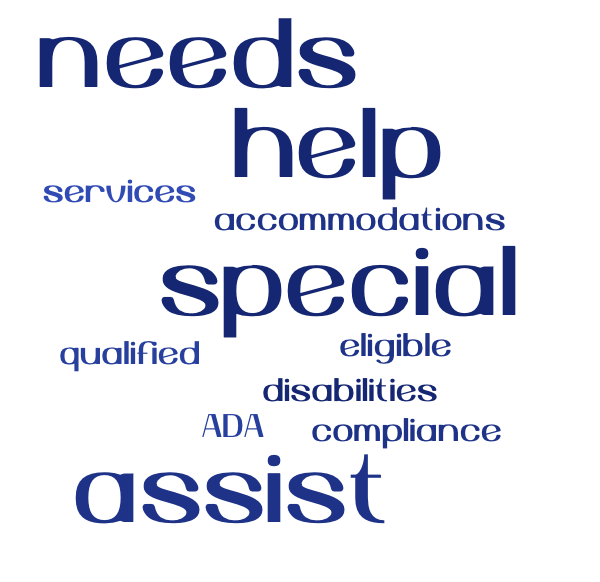Disability resource offices use websites to convey key information to students and the campus community. Often, the office website establishes the first impression our offices. On many campuses, it is the only place where disability is mentioned. It may provide a way for visitors to the site to determine how disability is viewed on the campus.
What is Current Practice?
Many websites focus primarily on:
- Compliance with laws
- Policies of the disability services office
- Roles and responsibilities of disabled students
- Service delivery procedures including eligibility criteria and documentation guidelines
Traditional Examples
In exploring websites, below are a few examples we found (emphasis ours):
- Students interested in the academic and auxiliary services available (as mandated in Section 504 of the Rehabilitation Act of 1973 and the Americans with Disabilities Act of 1990) should make an appointment…
- It is not possible for the staff to anticipate all of a student’s unique and special needs during their college experience.
- The college is committed to meeting the needs of all students who meet the criteria for special assistance.
- Because of the complexities of disabilities, “reasonable accommodation” will be determined on an individual basis by the staff in consultation with the student and faculty and/or staff member.
- An undue hardship refers to any accommodation that would be unduly costly, expensive, substantially disruptive, or that would fundamentally alter the nature of the program.
We encourage you to explore various websites of disability resource offices and see what you find. Our own search revealed a mix in terms of how disability and the role of the office is represented.
Explore your own website to see what the messages are. You may want to use a word cloud generator or word counter that you can find online, paste text from your website into it and see what words are most common.

What are the implicit messages?
- A focus on what is “mandated” implies that efforts to create access are to avoid legal complaints.
- Disabled people are required to provide proof of their right to accommodation.
- Disabled people are unable to achieve without assistance.
- Disability is hard and requires good will and charity.
- Disabled students are needy, different, and expensive. And if the accommodation you are requesting is expensive, it likely will be denied.
How might this be different?
Disability resource offices design web sites that are accessible and useable, represent disability as an aspect of diversity, promote access as a matter of social justice, and recognize the importance of inclusive design in all environments.
Refocused Examples
What is the potential impact of this change?
- The office is presented as a resource to all members of the campus community.
- Disability is welcomed and appreciated.
- The problem and the solution belong to the entire campus community.
- The disability resource office is seen as having a leadership role in creating inclusive campus communities.
- The campus commitment is not simply a reaction to legal requirements but a part of a larger institutional commitment to diversity, social justice and equity.
- The focus is placed on poor designs which cause barriers for students. This change allows for an emphasis on designing inclusive environments that minimize the need for individual accommodations or services.